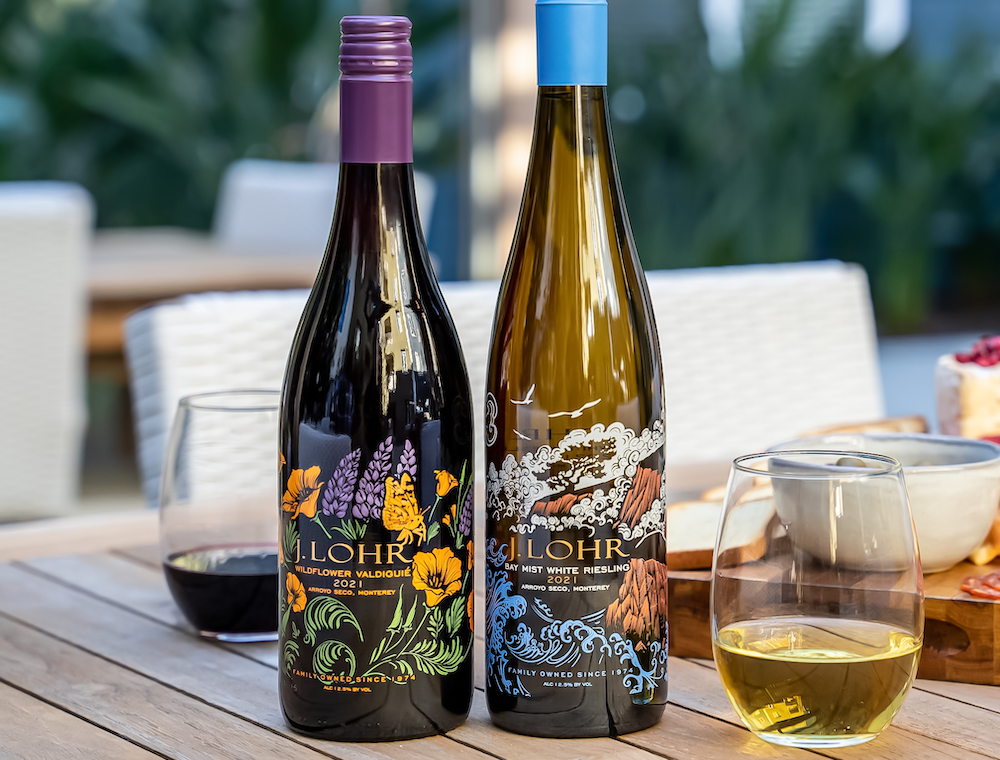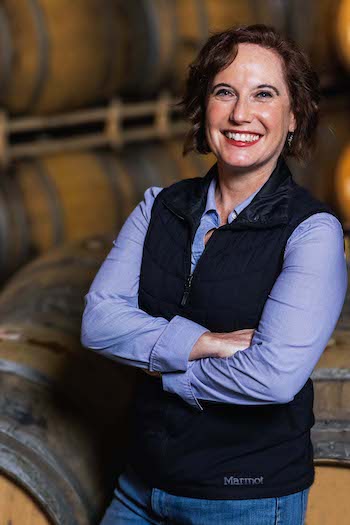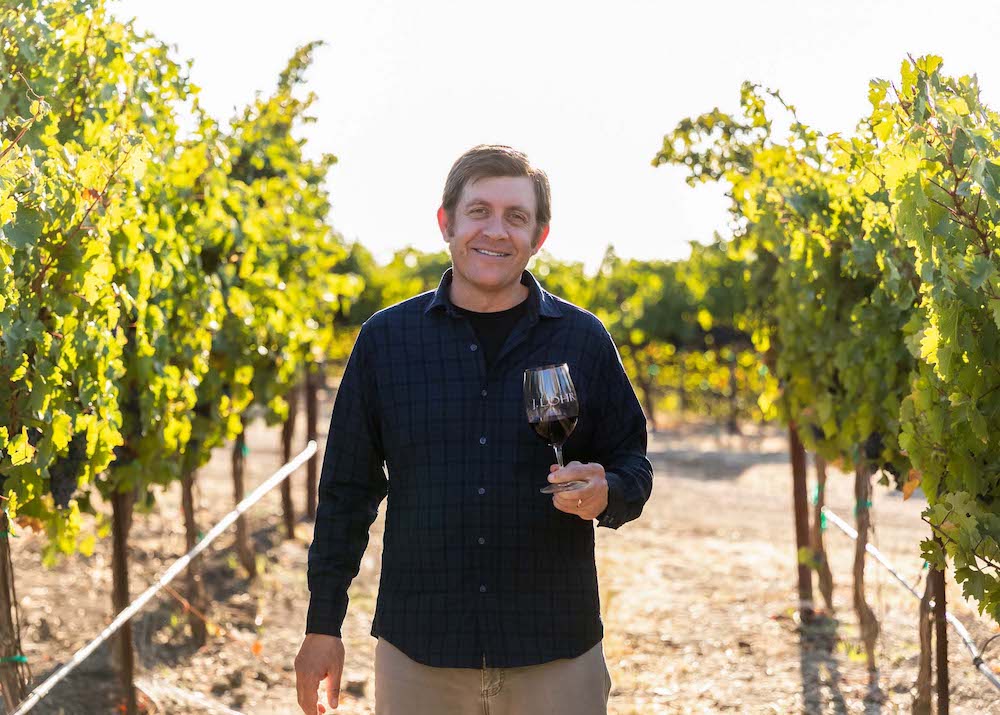
April 8, 2022 – This year marks the 50th anniversary of winegrower Jerry Lohr putting down roots in Monterey County. Back in 1972, Jerry and his young family gathered to plant the first of their vines in Arroyo Seco. His son Steve, now CEO of J. Lohr—a powerhouse in the wine industry that is now up to 1.8M cases—said they had a shade house where his Dad put the first vines to acclimatize them. “We planted green vines then, instead of dormant,” he recalls.
Green vines meant they were already leafed out. The shade house provided shelter for the vines that had come from a nursery in the Central Valley, a climate that was considerably warmer. It gave the vines a chance to adapt to the cool windswept cobbles of Arroyo Seco, where farmers were mostly growing beans and broccoli at the time.
Among the vines the Lohr’s planted in 1972 were Riesling and Valdiguié, two varietals that have been part of the J. Lohr portfolio from the outset. At the time, Jerry Lohr had no real data on what varieties could work well on the Central Coast. Planting was the ultimate gamble. Some varieties did ok in the incredible, constant wind, while others, not so much. Fortunately, both of these varieties managed to thrive. Lohr always says that his biggest mistake was planting Cab in Monterey, but he certainly hit the jackpot with it in Paso Robles. One million of the winery’s 1.8M cases are Paso Cabernet Sauvignon.

Kristen Barnhisel is winemaker for white wines at J. Lohr. She tells us that making wine from Arroyo Seco is a pleasure, and that highlighting one of them under the new Monterey Roots brand was truly an honor. “We were looking for new and fresh take on our popular Bay Mist Riesling,” she told us. “For the family, Jerry wanted to harken back to 1972 and that first planting in Arroyo Seco, the original Monterey roots. We wanted to produce something nice and fresh in a style that would appeal to more people.”
She tells us that for the 2021 vintage, she went with an Alsatian style and blended it with 1% Pinot Blanc from their estate vineyards in Greenfield, to impart white floral aromas of apple blossom and pear. “I wanted to make it fresher in nose, and at 1.8% residual sugar, it’s a medium dry style. It’s just a little bit sweet to counter spicy Asian food like Thai curry or sushi with wasabi. At 3.1pH and 12% alcohol, it’s nicely balanced. We definitely picked a bit earlier, and at lower brix, for fresher fruit and lower alcohol. I want to respect the fruit, especially that lovely lychee and Meyer lemon. The wine is more minerally and leaner than previous vintages.”
Barnhisel says the Riesling fruit was machine picked and fermented in stainless steel to preserve and showcase the fruit. The Pinot Blanc is all hand picked from the F & G Vineyard, farmed by Michael Griva, then fermented in neutral oak, giving it some texture, but never imparting an oaky flavor. They also did lees stirring on the Pinot Blanc to add even more creaminess. They’ll be bottling that 2021 Pinot Blanc as a varietal as well. Referring to the Riesling with that very important 1% of Pinot Blanc added, Barnhisel says, “It was really fun to make a wine that is more an ode to Alsace, with lower alcohol, and a little ‘fruit hat’ of Pinot Blanc.”
One look at the attractive blue topped bottle, the Monterey cypress and the crashing wave on the silkscreened label, and you’ll get the hint this is supposed to be a wine that whisks you away to the Monterey coast. Twist off, and pour yourself a vacation. Add fried calamari with jalapeno tartar, pot stickers with plum sauce or spicy Chinese chicken salad.
Bay Area native, Brenden Wood, has been at J. Lohr since 2004, starting as assistant winemaker, then becoming winemaker for red wines in 2019. He’s responsible for making the Valdiguié from Arroyo Seco, where there are 30 acres planted. J. Lohr is only one of 10 wineries to grow and make it in California.

Wood tells us, “Valdiguié is high yielding and has big clusters and big berries, which can be susceptible to mildew. It’s grown in the southwest of France, in Languedoc. It came here as Gamay Noir in the early 1900s, before Prohibition, and was planted up and down the coast. It was loved for its large yields and lower alcohol. During the 1960s and 70s, it was sold as Gamay Noir. In fact, Napa called it Napa Gamay, but in the 1990s, that terminology was prohibited by the TTB.”
That’s because the French government started clamping down on use of the term “Gamay” in the 1990s. Genetic testing informed the Lohr’s that they were growing Valdiguié, which actually has more color and fruit flavor than Gamay. Bonus!
Woods says that Valdiguié has very big purple berries and quite a thick skin, which helps it withstand the challenges of a long hangtime. “We do 1/3 carbonic and 2/3 traditional fermentation,” says Woods. “The carbonic adds the same properties as whole cluster. It takes a couple of weeks to add peppery character to it.”
While the “Wildflower” Valdiguié has always been done in a Beaujolais style, in more recent years, they have made it lower in alcohol. It’s currently down to around 12%. “My family drinks it all the time! It’s great chilled for the patio in summer, and we always have it at Thanksgiving: it’s a tradition! The bright red cranberry and pomegranate flavors are wonderful.”
For 2021, he tried to keep it on skins for less time, and kept the free run separate, using more free run in the final blend than in previous vintages. It’s processed entirely in stainless, whereas all the other reds he does see barrel aging. They only got 6k cases of this sassy red for 2021, which is not a lot. “It is a big yielder,” notes Wood. “If you leave it unchecked, it will crop to 10+ tons/acre, which was one of the attractions to that variety, especially in the south of France. We are getting around 6 to 10 tons per acre.”
The Valdiguié packaging features vivid Monterey lupine, poppies and the Checkerspot butterfly, which is native to the area. The artwork for both was created by Bergen Glass, where the silkscreening was done.
Both wines are just $13 per bottle. You can hardly buy a glass of the most egregious swill for that price any more.
So, twist off some fun and raise a toast to Jerry Lohr and his family’s roots in Arroyo Seco. It’s a tradition 50 years in the making.
About the author
Laura Ness is a longtime wine journalist, columnist and judge who contributes regularly to Edible Monterey Bay, Spirited, WineOh.Tv, Los Gatos Magazine and Wine Industry Network, and a variety of consumer publications. Her passion is telling stories about the intriguing characters who inhabit the fascinating world of wine and food.
- Laura Nesshttps://www.ediblemontereybay.com/author/lness/
- Laura Nesshttps://www.ediblemontereybay.com/author/lness/
- Laura Nesshttps://www.ediblemontereybay.com/author/lness/
- Laura Nesshttps://www.ediblemontereybay.com/author/lness/


